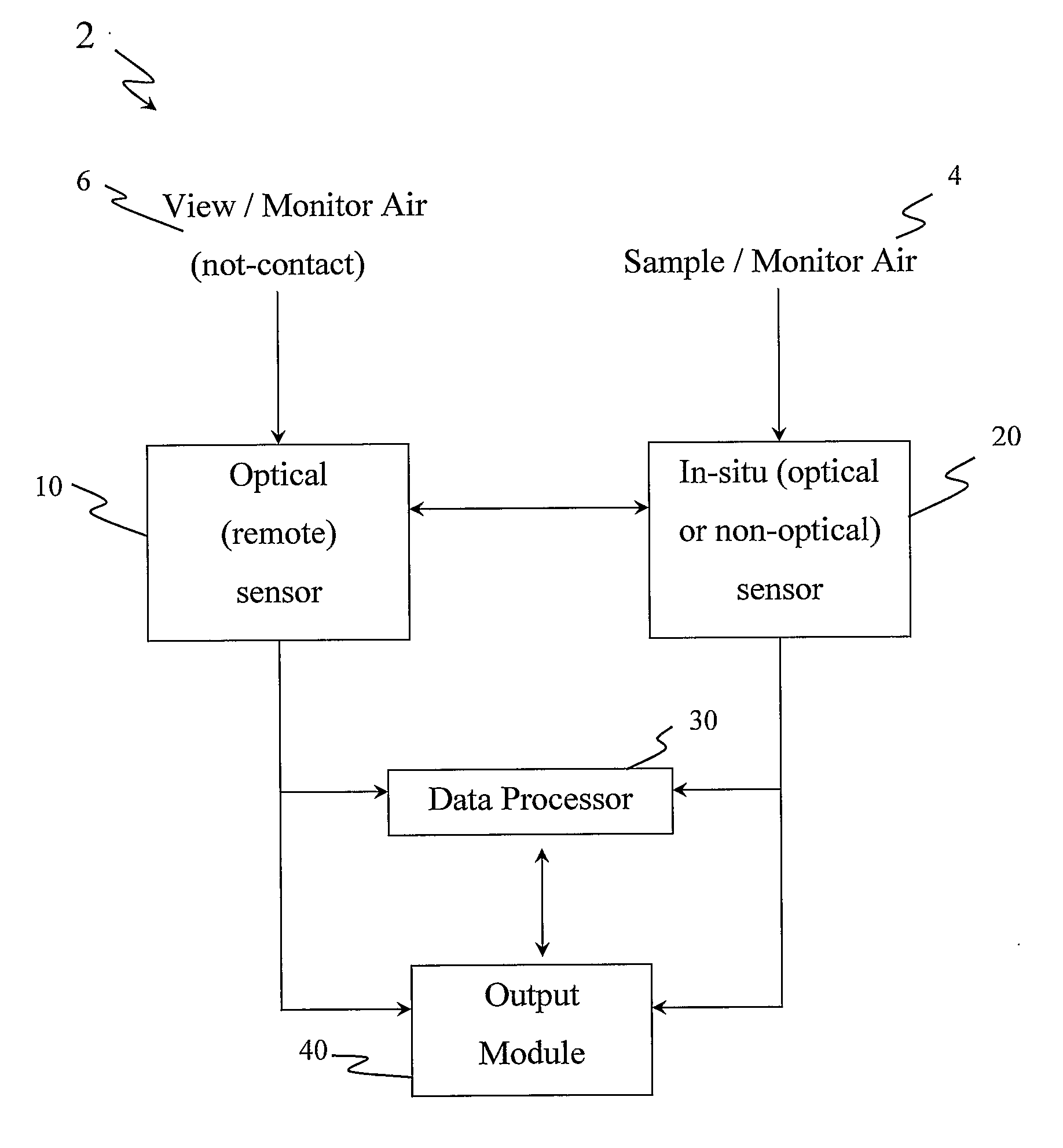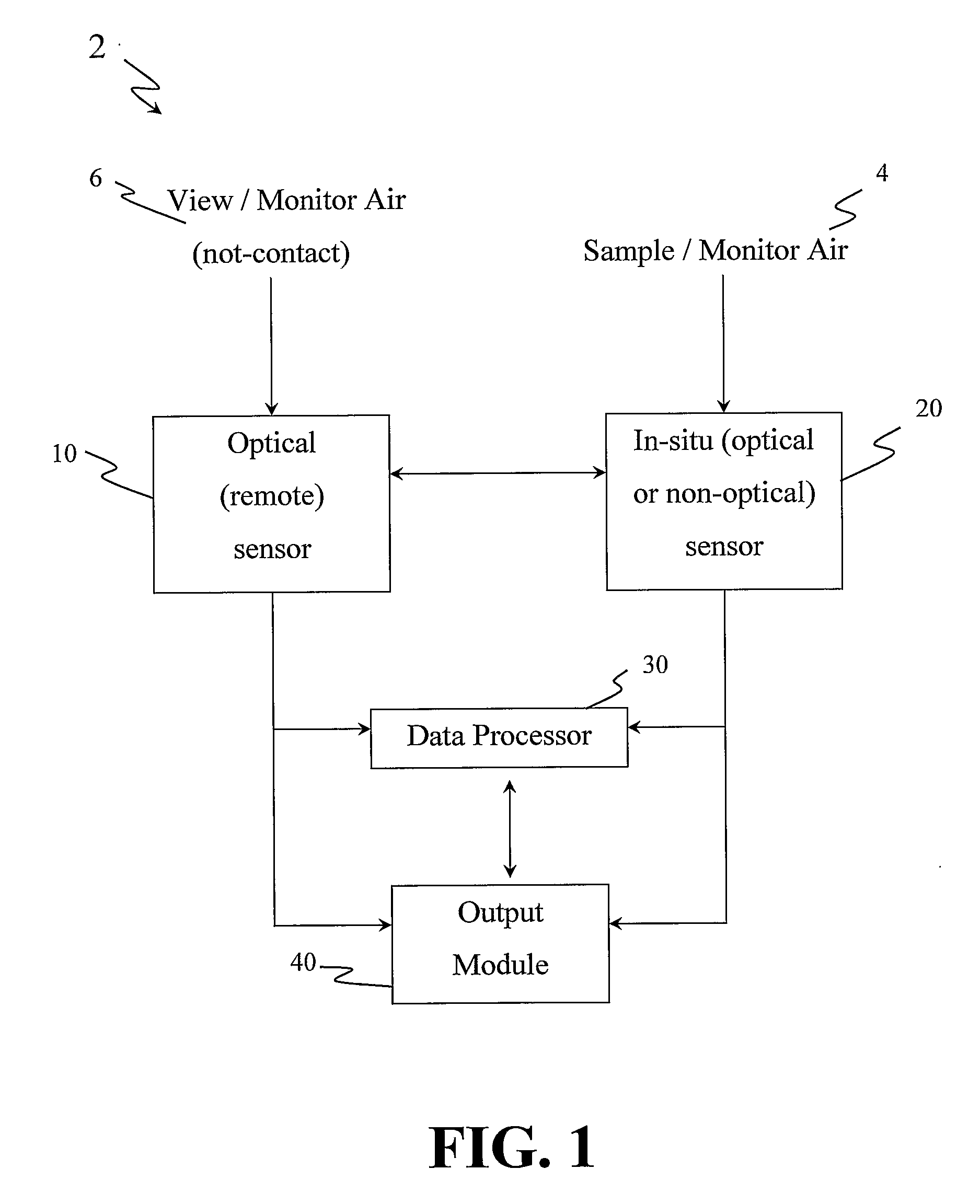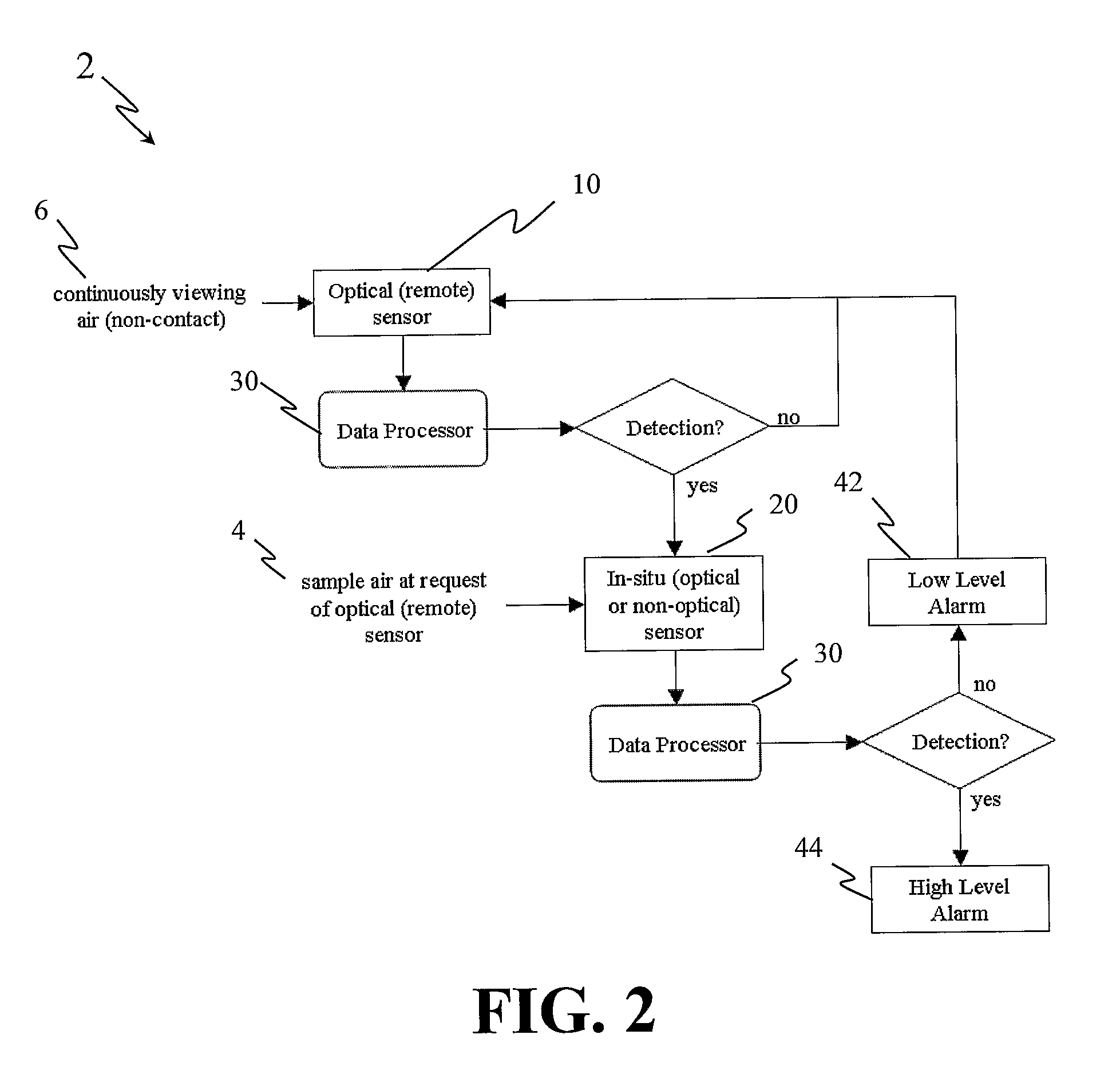Remote sensor and in-situ sensor system for improved detection of chemicals in the atmosphere and related method thereof
a technology of in-situ sensor and chemical detection, which is applied in the direction of error detection/correction, chemical methods analysis, instruments, etc., can solve the problems of difficult, or even impossible, to have a single sensor that can meet all these requirements, and achieves low energy, low maintenance, and small size
- Summary
- Abstract
- Description
- Claims
- Application Information
AI Technical Summary
Benefits of technology
Problems solved by technology
Method used
Image
Examples
Embodiment Construction
[0010]There is a need in the art, in part due to the increased threat to homeland security, in particular the threat of terrorist attacks involving toxic chemicals, to provide a monitoring system comprising a plurality of sensors that can detect chemicals in atmosphere (See Joseph R. Biden Jr. “When Chemicals Attack”, The Washington Post, p. A13, Aug. 2, 2005, of which is hereby incorporated by reference herein in it's entirety). Such sensors are also useful for environmental protection, monitoring industrial process, medical facilities, etc. To be effective, such sensors are expected to possess (to varying extents in whole or in part) the following characteristics:[0011]a. provide alarms at high level of confidence (i.e., low rate of false positive and low rate of false negative alarms),[0012]b. be fast, i.e., allow scanning large spaces such as airport terminals within a few seconds, or provide fast alarm to burst of chemical releases within approximately one or two seconds,[0013]...
PUM
 Login to View More
Login to View More Abstract
Description
Claims
Application Information
 Login to View More
Login to View More - R&D
- Intellectual Property
- Life Sciences
- Materials
- Tech Scout
- Unparalleled Data Quality
- Higher Quality Content
- 60% Fewer Hallucinations
Browse by: Latest US Patents, China's latest patents, Technical Efficacy Thesaurus, Application Domain, Technology Topic, Popular Technical Reports.
© 2025 PatSnap. All rights reserved.Legal|Privacy policy|Modern Slavery Act Transparency Statement|Sitemap|About US| Contact US: help@patsnap.com



